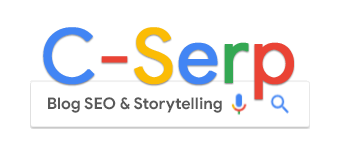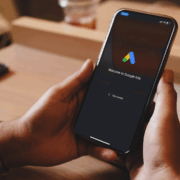How to expand your reach with reverse location targeting in Google Ads

Not everyone searching for your city is located in it.
Whether they’re planning a move, booking a trip, or shopping for a better deal, people often search for businesses in locations other than their own.
These high-intent searches often go unseen if your campaigns aren’t properly configured.
That’s where reverse location targeting comes in.
What is reverse location targeting?
Reverse location targeting is a search campaign strategy that targets location-specific keywords, but shows ads to users outside your business or service area.
For example, someone in Louisiana searching for “houses for sale in Houston, TX” would see your ad, even though they’re not in Houston.
These campaigns help drive leads, sales, or traffic from users interested in your location, even if they aren’t physically there.
Here are a few real-world examples:
- Targeting “Ford Dealerships in Houston” for users 50 miles away in areas without large dealerships.
- Targeting “Dallas RV dealerships” for users 100 miles out, where RV dealers are scarce or pricing is better in Dallas.
- Targeting “Statue of Liberty boat tours” for users across the U.S. planning trips to New York City.
Why use reverse location targeting at all?
Isn’t this already covered in search campaign settings?
Not exactly.
By default, Google shows your ads to people “who’ve shown interest in your targeted locations,” but how that interest is determined is unclear, and not always accurate.
You also don’t want “near me” keywords triggering ads for users across the country.
To effectively reach users outside your area, you need separate campaigns using phrase or exact match keywords that include:
- City names.
- ZIP codes.
- Or other location-specific terms.
Otherwise, intent is muddy, and you risk wasting budget on irrelevant clicks.
People near your business search differently than those outside your area, and your campaigns should reflect that.
Dig deeper: Location targeting in Google Ads: Balancing automation and control
How to use reverse location targeting
Setting up reverse location targeting requires a few key steps:
- Research location-specific keywords thoroughly.
- Watch for duplicate city names across different states.
- Use ZIP codes or suburbs when possible.
- Exclude overlapping locations in other campaigns.
- Create one campaign for your local area, and separate ones for users outside it.
- Target by country, state/region, or a custom radius (e.g., outside city limits).
Before launching, identify exactly how users are searching for your location – by city, ZIP code, neighborhood, etc.
To avoid wasting ad spend, you should include only these keywords when targeting people outside your area.
Once keyword research is complete, structure your campaigns accordingly.
If you’re targeting multiple areas (e.g., like neighboring states), create one campaign per region.
This gives you cleaner data and better insight into how different audiences respond.
Industries that commonly use reverse location targeting campaigns
These search campaigns are commonly used in industries where customers search for services or products outside of their current location:
- Real estate.
- Travel (hotels, car rentals).
- Vacation planning.
- Entertainment, events, concerts.
- Vehicles, boats, RVs.
In most cases, you’ll still run local campaigns targeting users physically near your business.
Reverse location targeting adds a layer, reaching users outside your area who are searching for your location using specific keywords.
This dual-campaign setup captures both local and out-of-area intent without relying on Google’s default location targeting, which is often too broad.
Even in industries with specialized ad formats (e.g., like hotels or car dealerships), search campaigns using reverse location targeting can still be valuable additions.
Real estate
It’s common for people to search for homes in a city they plan to move to, not where they currently live. Capturing this traffic is essential.
A single nationwide campaign targeting “houses for sale near me” won’t work.
You’ll need one campaign for nearby users, and another for out-of-area searches using city-specific terms.
Travel and vacation planning
Travelers often search for services in a city they’re visiting, not currently in. These users require a different keyword set focused on destination-specific terms.
Entertainment, events, and concerts
Similar to travel behavior, users frequently plan activities ahead of time in other cities. Targeting out-of-town users searching for location-specific events helps fill this gap.
Vehicles, boats, and RVs
Buyers in smaller towns may search in nearby metro areas for better inventory, pricing, or availability.
These are high-consideration purchases, and users are often willing to travel, making reverse location targeting a smart strategy even if other dealership ad formats are available.
Dig deeper: 9 essential geotargeting tactics for Google Ads
Worth a test?
If you have the budget, reverse location targeting is worth testing, especially if your audience searches for your product or service from outside your city.
Adding this campaign type expands your reach beyond local traffic and can improve long-term performance and ROI.
Unlock untapped demand outside your local area
Reverse location targeting isn’t a default setting; it’s a strategic choice.
When done right, it allows you to reach high-intent users outside your area who are already searching for what you offer.
With the right setup and targeting, it’s a smart way to expand reach and improve campaign results.


